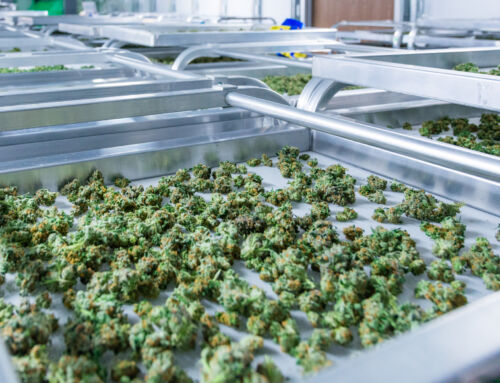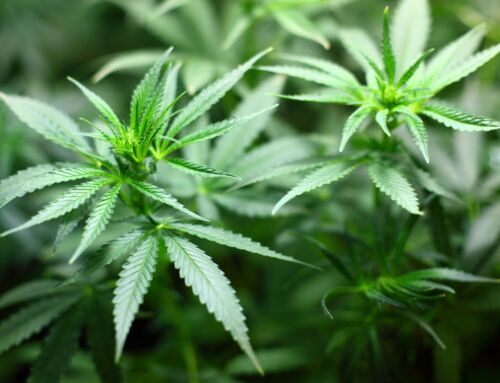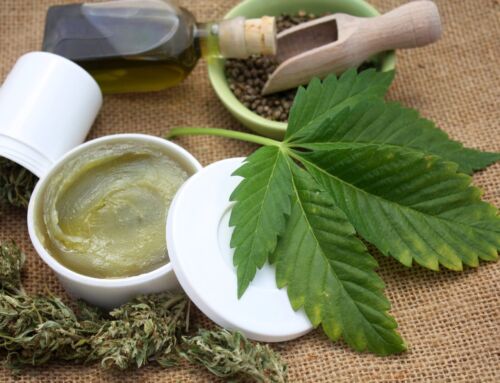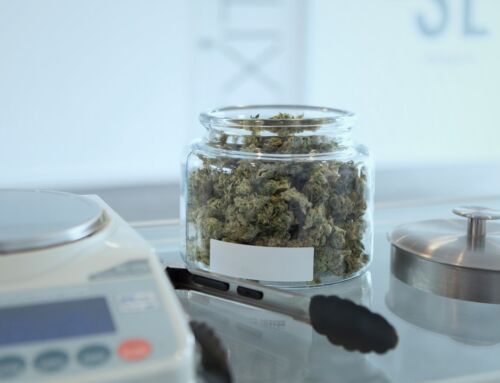Cannabis is one of the most popular drugs in the world. According to United Nations reports, over 192 million people use cannabis products worldwide. That’s 2.4% of all people on Earth!
Moreover, usage is growing every day. As legalization trends continue, marijuana’s popularity steadily increases. Economists predict the global cannabis market’s value will be $128.92 billion by 2028.
Yet, despite that popularity, contemporary media misrepresents the process of cultivating and using weed. One critical component of the process is decarboxylation. Without it, a cannabis plant can’t do much for anyone.
To decarb weed is to make it useful. If you want to jump into the growing marketplace, it’s smart to learn different decarboxylation methods.
Moreover, experimenting with decarboxylation options can get you the effects you’re after more consistently. In this guide, you’ll learn about what decarbing is and how it works. Then, discover the merits and drawbacks of four decarboxylation strategies.
What is Decarboxylation?
Decarboxylation is an elimination reaction. Elimination reactions are a type of chemical reaction that alters the chemical compounds in a substance. At a molecular level, all chemical compounds are chains of atoms.
Elimination reactions cut (eliminate) an atom from the chain. Decarboxylation processes cut a carbon atom from the chain, which transforms the compounds. This transformation, in turn, changes the properties of the substance
Like many elimination reactions, decarboxylation is endothermic. That means the process adds energy (typically heat) to the substance. The added energy causes the molecules to vibrate, which breaks some of the existing bonds in the chain.
Naturally Occurring Compounds in Cannabis
Cannabis plants naturally contain hundreds of chemical compounds called “cannabinoids.” All humans have an endocannabinoid system that runs throughout our bodies. This system interfaces with many other systems in our bodies, including:
- The digestive system
- The central nervous system
- The parasympathetic nervous system
- The respiratory system
- The endocrine system
The endocannabinoid system acts as a “mediator” that regulates those other systems.
Cannabinoids can bind to receptors in the endocannabinoid system. This binding impacts the function of the endocannabinoid system. That impact, in turn, creates the therapeutic and psychoactive effects of cannabis.
But, different cannabinoids have different effects when they bind to receptors. Many do not affect the system’s mediation. Others have only mild effects.
Different Cannabinoids, Different Effects
To get the most desirable effects from cannabis use, you have to intake the right cannabinoids. Most people seek the effects of the cannabis plant’s psychoactive compounds, like THC. The non-psychoactive cannabinoid CBD is also popular.
Less often, people aim to intake cannabinoids like CBN, CBG, and the cannabinoid terpene beta-caryophyllene.
Through observation and scientific research, cannabis users have discovered the precise effects different cannabinoids have on their bodies. Thus, people want different strains of weed to get different results. Someone who wants increased energy, appetite, and euphoria benefits from different cannabinoids than people seeking relaxation and pain relief.
Cannabinoid Conversion
There is not a significant concentration of the most useful cannabinoids in unaltered cannabis plants.
Before processing, cannabis plants largely contain THCA and CBDA. These acid cannabinoids cannot bind to endocannabinoid receptors effectively. As a result, they offer little-to-no pleasurable or therapeutic benefits.
Decarboxylation changes these substances. This process alters the atomic chains in THCA and CBDA. Post-decarboxylation, your weed should contain plenty of effective cannabinoids, including:
- CBD
- THC
- THC and CBD derivatives
- Cannabinoid terpenes
The exact amount of each substance in decarboxylated weed will vary. The cannabis strain and the decarboxylation method you choose are critical factors.
How Does Weed Decarboxylation Work?
Weed decarboxylation is a controlled chemical reaction. No matter which method you use, decarboxylation works by severing a carbon atom from the molecular compounds in your weed.
All decarbing methods add heat to cannabis over a period of time. But, the specific impact of the process depends on how many chemical bonds in the weeb are cut, and what compounds are formed when the atoms bind again in the aftermath.
Changing how much heat you apply, and how long you apply it for, changes the ultimate result of your decarboxylation. However, know that the divergent naturally occurring compound ratios in different strains of weed are another significant factor in your results.
When is the Right Time to Decarb Weed?
First, know that you don’t have to decarb cannabis if you are going to smoke it. When you smoke weed in a joint, bong, or pipe, the heat from the lighter instantly decarboxylates the weed. You only need to decarb weed separately if you want to use it in oils, tinctures, or food.
Experts disagree on the exact best time to decarb weed. It depends, in part, on your desired results. That said, there are some widely-held best practices when it comes to timing.
Grind, Decarb, Infuse
First, most experts agree that, if you’re creating edibles or oils, you should decarb weed before the infusion process. If you attempt to decarb and infuse simultaneously, you’ll only successfully convert 10-25% of the plant’s compounds into desirable cannabinoids.
Many professionals argue it’s best to decarb weed after you grind it. While it’s possible to decarboxylate unground buds, it’s harder to ensure each gram is exposed to the optimal temperature.
Freshly Harvested, Young Plants
Studies show that regardless of how you store weed, THC will continue to break down and terpenes will evaporate. If possible, decarb your weed only a few days before you intend to consume it. The nearer the decarb date is to the date of consumption, the better.
Finally, growers recommend harvesting cannabis plants for decarbing when they’re relatively young. Cannabis plants do undergo decarbing naturally as they age. But, aging also decreases the plant’s total number of cannabinoids overall.
Older cannabis plants are only ideal if you want to create CBN. This is an unusual goal. Most growers aim to generate CBD and THC.
How do Different Decarb Methods Affect the Final Product?
Different decarbing methods utilize different temperatures. The hotter the temperature is, the faster THCA and CBDA convert to THC and CBD. But, hotter temperatures also increase the risk of over-carboxylation.
Over-carboxylation happens when THC molecules are overheated or over-oxidized. This causes THC to degrade into CBN. Over-carboxylation also risks terpene evaporation, which can diminish the weed’s quality.
Moreover, if the weed gets way too hot, it will just burn. This destroys the product entirely.
Temperature and Strength
Choose a lower-temperature, short-time-frame method to create a less-potent (milder) product. Low-temperature, long-time frame methods create stronger products and bear less risk of overdoing it. Anecdotally, low-temperature methods generally mitigate the risk of terpene evaporation, so resulting products are more likely to offer “entourage effect” benefits.
High-temperature, short-time frame methods can create potent weed quickly. But, they’re more energy-intensive. And, they bear a high risk of over-carboxylation.
High-temperature, long-time-frame methods aren’t great unless you only want CBN. Otherwise, avoid them. Here are the four most popular methods to decarboxylate raw cannabis.
Method #1: Use Oven to Decarboxylate Cannabis (Bake)
The most popular way to decarb weed is to bake it. Baking is relatively low-temperature and it can take anywhere from 25-90 minutes.
Note that baking weed is not discrete. The cannabis aroma will fill the room. To bake weed, you will need:
- Baking tray
- Parchment paper
- Oven
- Grinder (or, knife and cutting board)
- Cannabis
Many experts recommend drying your cannabis after you harvest it, before decarboxylation. This makes it easier to heat it consistently.
Step 1: Cut Up or Grind Weed
Turn your cannabis plant into the same-sized bits. You can chop, grind, or crumble the weed to do this. The goal is to expose the cannabinoids in each bit to heat evenly.
Step 2: Preheat Your Oven
On average, growers choose to preheat their ovens to 250°F (121°C). But, you may choose a lower preset temperature to reduce the THC levels and maximize the effect of terpenes in the final product. In that case, set the oven anywhere from 223°-245°F (106°-118°C).
To maximize the THC levels in your final product, set the oven as high as 293°F (145°C). Note that the initial temperature impacts the optimal baking time,
Step 3: Prepare Your Cannabis
Put parchment on your baking pan. Disperse your chopped cannabis evenly across the pan. It should be only one layer deep, so no cannabis bits inadvertently block other bits from the heat.
Optionally, cover the weed with another sheet of parchment to prevent terpene evaporation.
Step 4: Bake the Weed
Put the baking sheet of cannabis into the oven. If you’ve set the oven to 250°F (121°C), bake it for 25-30 minutes.
If you’re baking at a lower temperature, bake for a longer amount of time. For example, if you’re baking at 223°F (106°C), leave it for at least 45 minutes.
When you decarb weed at 293°F (145°C), you shouldn’t leave it to bake too long. In fact, according to researchers who analyzed high-temperature decarbing methods, you should only bake weed for 7 minutes at 293°F (145°C). That maximizes THC.
Step 5: Let Weed Cool
Once the cannabis is done baking, take it out of the oven. It should be nice and brown. Let it cool a bit before you infuse it in oil or butter.
After the weed cools, you can infuse it right away. Or, you can choose to store it in a cool place, in an airtight container. Make sure to use the product within 3-6 months.
Method #2: Decarb Cannabis With Low-Temperature Steam (Sous Vide)
The sous-vide method is the lowest-temperature method for decarbing weed. This is the best method if you want to generate and maintain terpenes. People also opt for sous vide when they want a product with a high ratio of CBD to THC.
Sous vide decarboxylation doesn’t generate a strong smell. To use this method, you will need:
- Stovetop
- Water
- Saucepan with lid
- Boil-safe, sealable plastic bags
Optionally, you may or may not use these tools:
- Immersion circulator (aka sous vide precision cooker)
- Thermometer
- Grinder
The best bags are vacuum-sealable bags chefs call “sous vide bags.” Each bag should be able to hold all the cannabis you want to decarb. It should also be small enough to submerge entirely underwater in your saucepan.
Step 1: Grind Your Cannabis
Grind or chop up your cannabis. You can also tear the cannabis into bits. Each bit should be roughly the same size.
Step 2: Put Weed Into Boil-Safe Bag
Put the cannabis bits into the boil-safe bag. Compress the bag to get rid of any air in it. Then, seal it.
Step 3: Setup Saucepan
Fill the saucepan with enough water to completely submerge the bag. Set the filled saucepan on the stovetop.
If you’re using an immersion circulator, set it in the saucepan now. Otherwise, set your thermometer in the water.
Step 4: Heat the Water
Turn on the stove and heat the water in your saucepan. Different growers recommend heating the water anywhere from 203°F (95°C) to 240°F (116°C).
Step 5: Heat Your Cannabis
Place the airtight, vacuum-sealed bag in the saucepan. Place a lid over the top of the saucepan. If you use an immersion circulator, it will automatically adjust and maintain the water’s temperature.
If not, pay attention to the thermometer. Adjust the heat to maintain the temperature you set in Step 4. Without adjustment, the water will slowly cool as the weed absorbs the heat.
Many experts recommend heating weed for 90 minutes during sous vide. But, if you sous vide at the hotter end of the scale, it may take as little as 45 minutes.
Very Low-Heat Variant
Note that some people decarb cannabis at an extremely low temperature. They maintain the water’s temperature at 185°F-195°F. This sous vide variant takes roughly eight hours to completely decarb the weed.
Niche Methods to Decarb Weed
Most growers prefer to bake or sous-vide their cannabis to decarb it. But, you can also try the confit method. Or, you can use a decarboxylation and infuser device.
These methods are similar
Method #3: Decarboxylate Weed Directly in Oil (Confit)
The confit method is less established than other methods. Many professionals advise against it.
But, some enthusiasts have experimented with the confit method and are happy with their results.
This method is similar to the sous vide method. But, you can put the cannabis directly in oil, without a bag. And, you’ll have to heat the oil to 248°F (120°C).
Growers disagree on how long you should heat your weed confit to properly decarb it. You can read different people discuss their approaches on the forum of 420 Magazine.
Method #4: Decarb Weed With a Decarboxylator and Infuser Device
This is the easiest method. Simply purchase a decarboxylator and infuser device. Some brands market these devices as “hemp oil extractors.”
Most of these devices cost $120-$250. They’re readily available on popular retail websites.
Follow the decarb instructions provided by the device manufacturer. You can find these instructions on the brand’s website. There are also instructions included with the machine.
What Else Can You Learn About Cannabis?
Cannabis may be one of the oldest plants cultivated by humankind. Archaeological evidence indicates the farmers grew the plant as early as 8000 BC. Yet, despite thousands of years of study, much of what humans once knew has been forgotten or buried.
Fortunately, organizations worldwide are recovering cannabis knowledge and making discoveries.
At Doctors of Cannabis, we invite you to join us on this journey. Whether you want a medical marijuana card to experience weed’s therapeutic effects, or you want to experiment and cultivate plants, we’re right here with you. Find a representative in your state today for a medical marijuana consultation!






